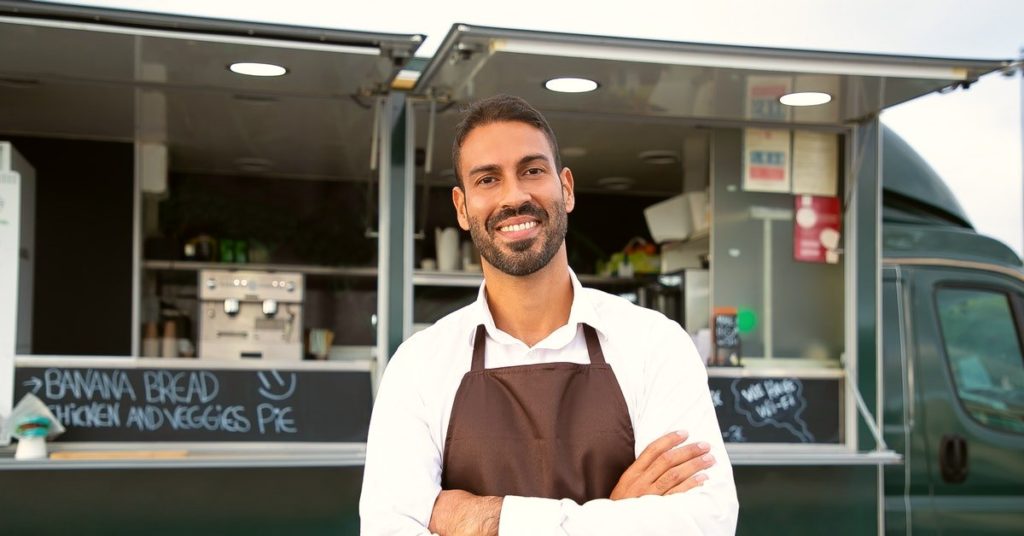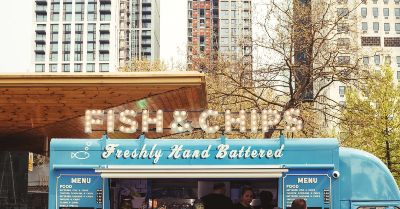Starting a Street Food Business

Estimated reading time: 7 minutes
Introduction
If you’re reading this article, you’ve likely been dreaming of a work-life away from the office. Maybe you have a culinary itch you really need to scratch. Well, you should know that starting a street food business is rewarding and challenging in equal measure.
As with the beginnings of any food business in the UK, there’s a fair bit of bureaucracy and paperwork to get through. You can read more about this in our Home Food Business Guide. In this article, we’ll be specifically exploring the practicalities of starting a successful street food business. Let’s get started.
Market Research
As with any creative endeavour, starting a food business can be romantic and captivating. It’s easy to become hypnotised by thoughts of a successful, strong brand with yourself at its head, cooking inventive and tasty meals for your customers.
Before giving in to your imagination, however, you must know the market. Street food is a growing industry in the UK; in 2017, it was growing at a rate of 20% per year. Furthermore, by 2018, its value to the British economy had doubled to £1.2bn. More and more young people are choosing the street food stall as their venue for dates and relaxed social gatherings, regardless of expense.

Evidently, the street food industry is a healthy one. However, as with any market, it’s becoming saturated. The first gourmet UK street food stalls didn’t have to be particularly inventive; through novelty alone, they would attract customers. They simply had to provide a different image to the greasy stereotypes of bacon sandwiches at typical food stalls.
However, now that the street food market has grown, to succeed you have to have a strong, individual idea. In the UK, successful businesses have to be hardworking and unique, offering new and interesting food. BBQ Dreamz is a famous Filipino food stall, selling exciting cuisine; after years of hard work, it is only now receiving investment on the basis of its individuality.
In addition to present success, you must ask yourself where you see the business within 5 years. How scalable is your model? If you have to select the finest truffles from an expensive truffle dealer, could you access enough for 200 people a night at some point? How prepared are you to hire more staff? Are you prepared to cook less and focus on running the day-to-day operations? All of these questions may seem abstract and scary (after all, you haven’t started the business yet) but they’re absolutely necessary.
Your New Workplace
What will you trade from? It may well be that the vessel you choose for sale also adds to the aesthetic and authenticity so craved by street-food lovers. Food trucks and wagons are common, if you want to remain mobile. Perhaps you might take the road less-travelled (pun intended) and pick a VW van, an old ambulance or something similarly left-field?
Whichever way you turn (pun somewhat intended?), there are inevitable ancillary costs and implications. Parking permits, van leases, mechanic costs, breakdown insurance, fuel; these are all very practical and real considerations. Remember, if you sell out of a van, it’s both your restaurant and your commute vehicle. Do your research before getting burdened with a 3-tonne deadweight in your driveway.

If you choose a market stall, there could be alternative problems to consider. Similarly, you likely need a lease from the local council, licenses to sell and probably some time spent on a waiting list, as market stalls are in high-demand.
Making this decision could and should depend in large part on the local competition. If your local market is bloated, with too many options for customers, perhaps the tiny back corner spot isn’t worth investment. Moreover, if there’s already a local BBQ street food truck with great success, trying to take over its patch would be difficult and a little amoral. As always, do some research and choose an individual vessel.
Day-to-Day Considerations
The daily operation of your street food business will likely face a number of common issues, which you can easily overcome with good practice. It’s impossible to know all of these potential problems but here’s a few things to consider:
Food Supplies
If you use a van or other vehicle, it’s likely that you will have to pick up your food supplies from vendors, rather than receive delivery. As such, can you safely transport them? Is your van equipped with proper refrigeration or temperature control? If you choose a market stall, perhaps you could arrange some discounts with your workplace neighbours, building good business relationships.
Power
In addition, you must consider how to power your ovens, grills and fridges. If you have a food truck, you’ll probably need a generator, lest you drain the battery. If you run a stall, check with the local authority to understand from where and for how much you’ll receive power.

Weather
This is a common consideration for British businesses. You must be aware, as you’ll likely be an outside trader, that poor weather can seriously affect sales. If it does, you must calculate whether good weather days will make up for any potential losses. If the numbers don’t add up, perhaps you could look at leasing an inside stall. Depending on where you’re based, note that this could be more expensive.
Food Hygiene Standards
Street food businesses aren’t like a restaurant, where people wait patiently to be served. They’ll fire orders at you and you have to get them out quickly and with good service. This means that you’ll have less time to clean-as-you-go. Furthermore, you’ll probably have less space to clean and less storage for the proper materials. You have to find solutions for this, as proper food hygiene standards and training are legal requirements. Our Level 2 Food Hygiene courses provide all the necessary education.
The Business Side of Things
Furthermore, you’re a soon-to-be business owner. You have to start thinking like one:
Funding
In the present moment and in the future, consider how you’ll get the money to set up and continue to grow your business. Though street food stalls and trucks aren’t as expensive as restaurants long-term, there can be high upfront costs. If you buy a fancy van, it could cost upwards of £50,000. Moreover, perhaps it’s not as easy to get a loan from a bank for a street food business, which they may consider a ‘trend’, likely to fail.
Branding
Your brand isn’t only the name of the company and your logo but choose them wisely. ‘Jan’s Cookies’ won’t be a great prospect five years down the line, when you’ve expanded into chicken sandwiches in brick-and-mortar buildings. So, pick with the future in mind. Similarly, what encapsulates your brand? What’s the fabric of your business? Sustainability, individual cuisine, a particular serving style; whatever it is, allow this ethos to reinforce your brand.

Advertising
Like any business, you must advertise. However, this is no typical business; if you own a food truck, perhaps you won’t be in the same place every day. As such, integrate this uncommon business model into your advertising. Use Twitter to make a competition of ‘finding’ the truck or stall that week; use pop-up stalls to get people excited. Facebook Marketplace and review websites can be useful for paid advertising, of course. However, remember the utility of free, possibly-viral content alongside it.
Conclusion
So, there’s evidently a great deal to consider before starting a street food business. It’s not an overnight project, as much as some successful companies make it seem that way. Authenticity and good service are built up with years of hard work and dedication.
However, you have a real opportunity to be part of a growing trend towards real, informal dining, at low start-up cost. So get involved!
